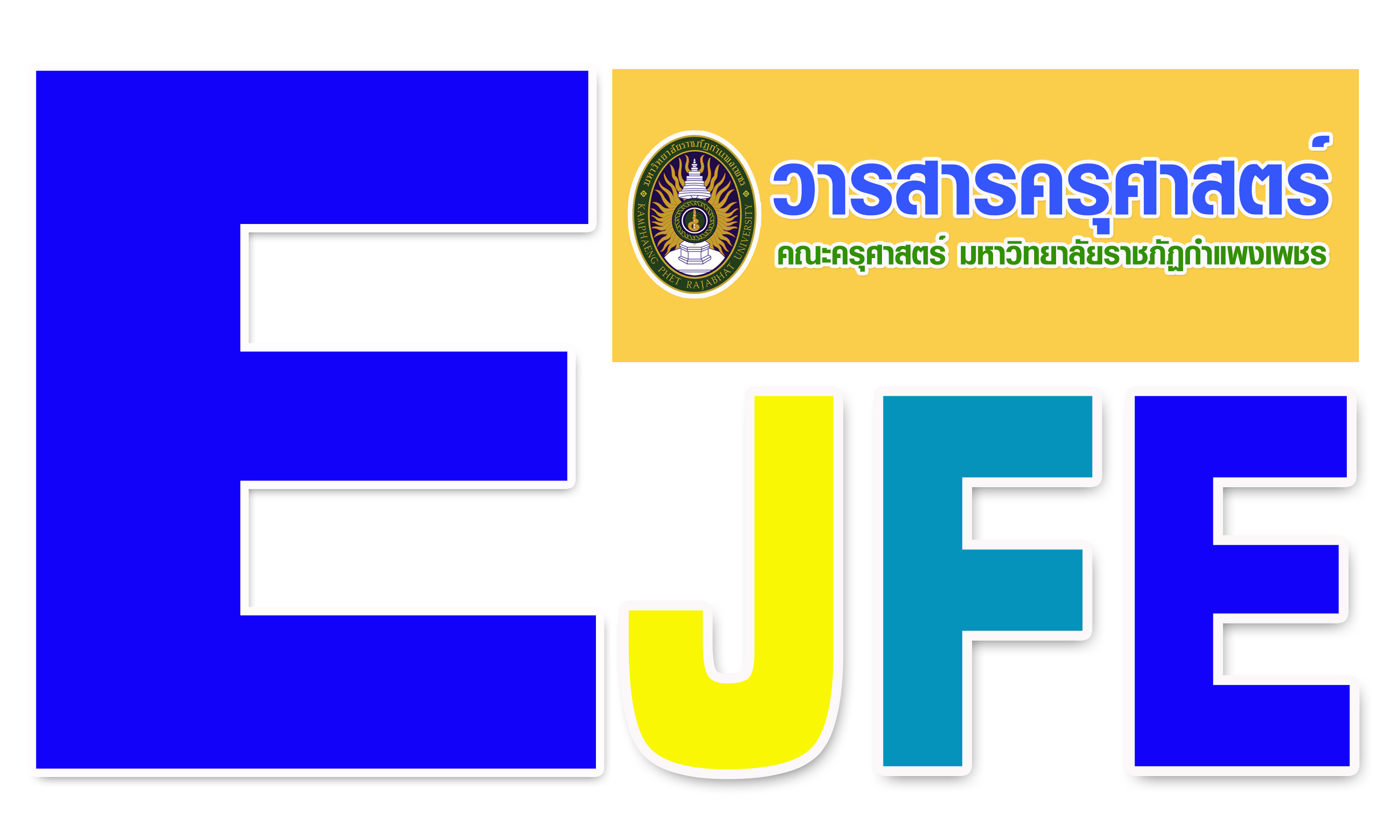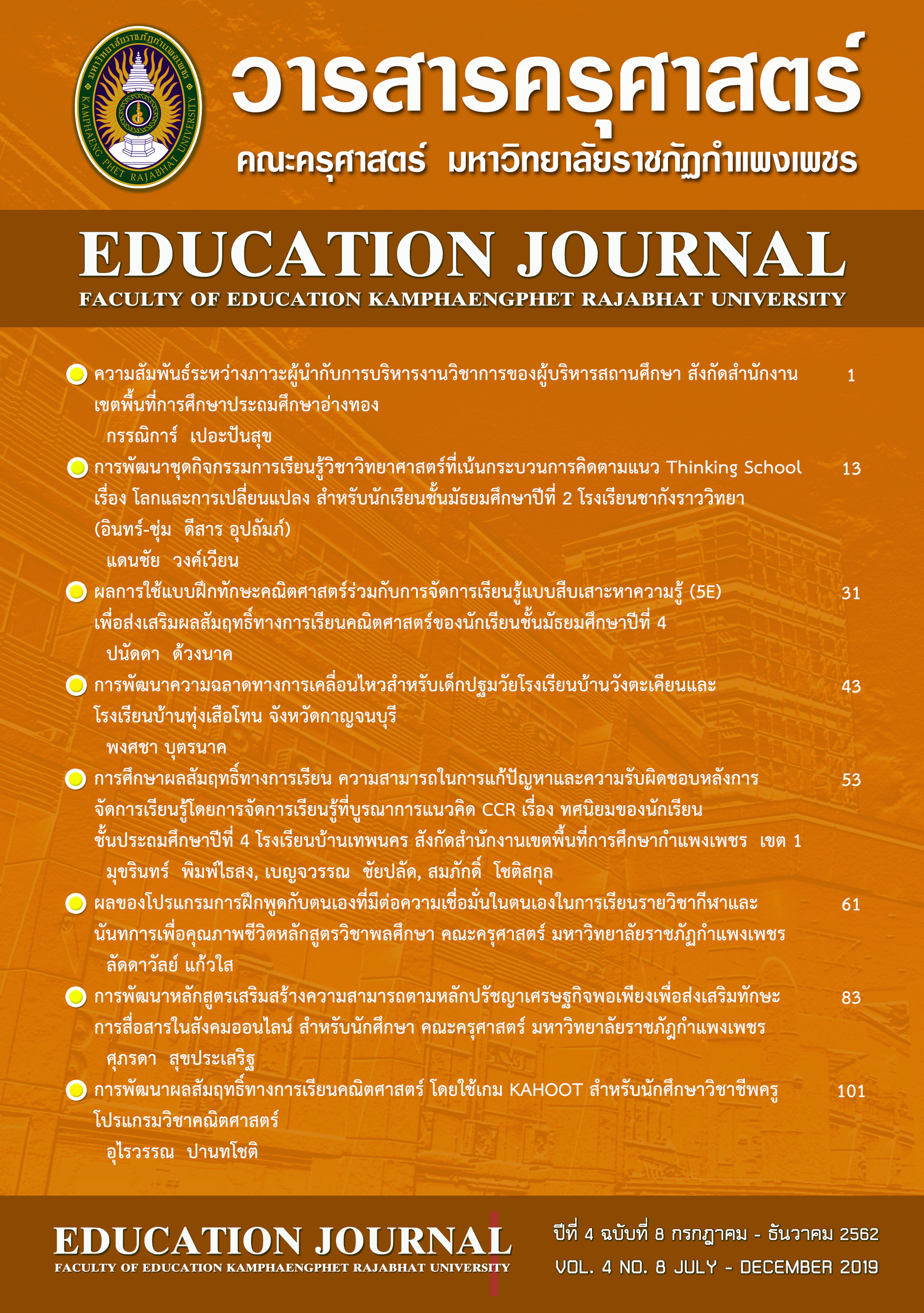THE DEVELOPMENT OF MATHEMATICS LEARNING ACHIEVEMENT BY USING KAHOOT GAME PROFESSIONAL DEVELOPMENT FOR TEACHING PROFESSION OF MATHEMATICS PROGRAM
Main Article Content
Abstract
The objective of this research is to design learning management by using KAHOOT games that develop mathematics learning achievement and to compare mathematics learning achievement after learning management using KAHOOT game. 27 people in the mathematics program and population standard as a student of mathematics program who enrolled in the course, teaching and learning, number and operation of the school level. Research tools namely, learning management plan using KAHOOT, mathematical learning measures using KAHOOT, statistics used for data analysis content analysis and taking T-test. (One sample test) The findings shown that; Design of learning management using KAHOOT games that developed mathematics learning achievement for teaching profession. There are 8 mathematics programs in the 5-step learning plan. Step 1 Motivation, is a step that encourages learners to be interested in activities and content that the instructor will teach by using KAHOOT. Step 2 Reviewing previous knowledge is the step that the instructor draws on the knowledge of the learner in the subject to study, to help learners to be ready to connect their previous knowledge to new knowledge. Step 3 Presenting New Information is a step for instructors to learn how to present new content, knowledge, information and new ideas using KAHOOT. Step 4 Training and Using is a step that the learner can bring to the knowledge to review and practice to gain more expertise and understanding so that they can use to solve problems. Step 5 Measuring Result and Learning Outcomes for learner to take a test of knowledge and ability after studying using KAHOOT. and Students who participated in learning management activities using KAHOOT; had has higher mathematics learning achievement than the standard with statistically significance at .05.
Article Details

This work is licensed under a Creative Commons Attribution-NonCommercial 4.0 International License.
CC Attribution-NonCommercial-NoDerivatives 4.0
References
กระทรวงศึกษาธิการ. (2551). หลักสูตรแกนกลางการศึกษาขั้นพื้นฐานพุทธศักราช 2551.กรุงเทพฯ: กระทรวงศึกษาธิการ.
บอพิศ เวิดสูงเนิน. (2561). การประยุกต์ใช้รูปแบบกิจกรรมผ่านเกมส์ Kahoot รายวิชาบัญชีต้นทุน 2 นักศึกษา ปวส.1 สาขาวิชาการบัญชี. เพชรบูรณ์: วิทยาลัยการอาชีพวิเชียรบุรี.
มิสนรีลักษณ์ ปัทมะทัตต์. (2558). การใช้สื่อการสอน KAHOOT เพื่อเพิ่มผลสัมฤทธิ์ทางการเรียนของนักเรียน ระดับมัธยมศึกษาปีที่ 4 รายวิชา Fundamental English. กรุงเทพฯ: เพชรเกษมการพิมพ์.
วิจารณ์ พานิช. (2555). วิถีสร้างการเรียนรู้เพื่อศิษย์ในศตวรรษที่ 21. กรุงเทพฯ: มูลนิธิสดศรี - สฤษดิ์วงศ์.
Meijen. (2017). Student Engagement Kahoot: School of Sport and Exercise Sciences.Retrieved from https://www.kent.ac.uk/elearning/files/kahoot.pdf.
Wang, A. I. (2015). The wear out effect of a game – based student response system.Computers & Education, 82(3), 217 – 227.
Zarzycka – Piskorz, E. (2016). KAHOOT it or not? Can games be motivating in learning grammar?. Teaching English with Technology, 16(3), 17 – 36.


